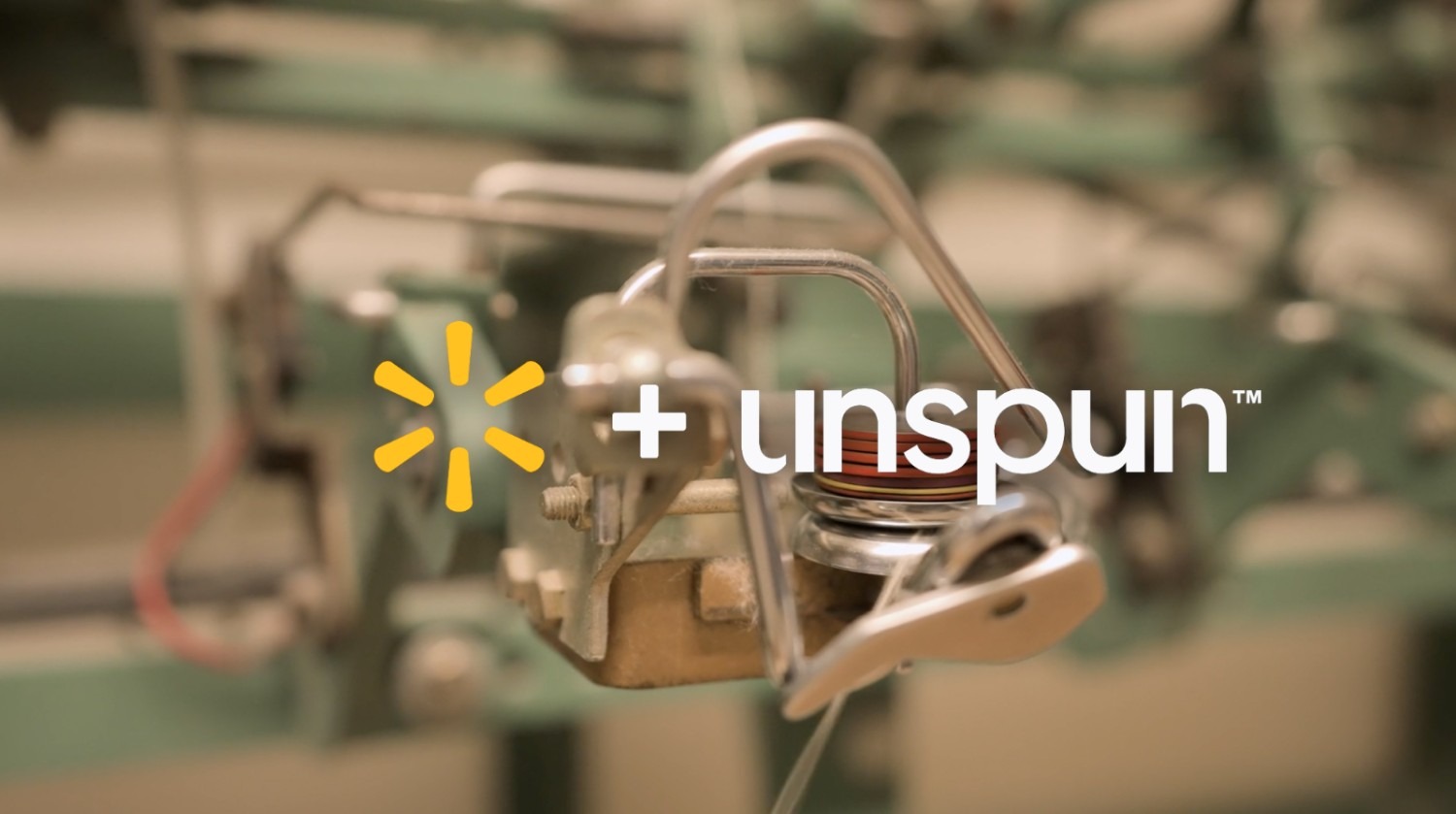
Category: TECHNOLOGY AND INNOVATION
Country: United States
By Andrea Albright, Executive Vice President, Sourcing
14th March, 2024
4 Min. Read
There is an iconic scene in Cinderella where the fairy godmother waves her wand, and a sparkling blue gown takes shape around the princess-to-be. It’s a dreamy moment, the way the fabric materializes and creates a gown, tailor-made just for Cinderella. What unspun is doing with their Vega 3D weaving technology, says Co-founder and Chief Product Officer Beth Esponnette, works kind of like that.
 While traditional methods of apparel production require fabric to be cut and stitched, unspun’s first-of-its-kind 3D weaving technology skips these steps, going straight from yarn to garment and eliminating waste generated by the process, like fabric loss, discarded inventory and transport emissions. It’s a thrilling innovation that has the potential to solve industry challenges, unlock and create skilled jobs in the U.S., meet consumer demand for locally made garments and deliver transparency and sustainability in the apparel supply chain – so we’re bringing it to Walmart.
While traditional methods of apparel production require fabric to be cut and stitched, unspun’s first-of-its-kind 3D weaving technology skips these steps, going straight from yarn to garment and eliminating waste generated by the process, like fabric loss, discarded inventory and transport emissions. It’s a thrilling innovation that has the potential to solve industry challenges, unlock and create skilled jobs in the U.S., meet consumer demand for locally made garments and deliver transparency and sustainability in the apparel supply chain – so we’re bringing it to Walmart.
We’re collaborating with unspun on a pilot project to explore how their Vega 3D weaving technology could be used in our supply chain, first applying the technology to create men’s chinos. It’s unspun’s ambition to have 3D weaving machines at microsites across the U.S., with a goal of 350 machines in use by 2030.
An industry stuck in the past
Little has changed over the years in how clothing is produced. Yarn is spun into a flat fabric that is cut based on a pattern and sewn together, with the excess fabric wasted, in a multi-step cycle taking place all around the world. This cut-and-sew model also requires businesses to carry excess inventory due to the guessing game that is consumer demand and ever-changing trends, generating a consistent stream of waste.

“One big problem with the clothing industry today is that because clothing is made before people want it, excess inventory has to be produced,” said Esponnette.
Cutting waste isn’t the only upside to unspun’s technology. At first glance, the 3D-woven chino won’t look any different from a traditionally manufactured pair, but there are features only achieved with 3D weaving. There will be no leg seams in the 3D-woven chino, making for a stronger and lighter product, and labels will be woven into the garment instead of sewn in, creating greater comfort. unspun’s on-demand model also allows for potential customization and brings the manufacturing process much closer to home through localized production.
“We believe that if we can think of the next generation of apparel and build a process that’s much more automated and enables on-demand manufacturing, we can allow an industry that has, more or less, left the U.S. [to] come back,” said Kevin Martin, co-founder and chief technology officer, unspun. He continued, “We were connected with Walmart because as we start talking about the ability to produce in the U.S. on demand, there are very few people thinking about that as actively as Walmart.”
Reimagining the future of retail
“Walmart seeking out a company like ours and collaborating in such a deep manner validates, one, the immensity of the problem, two, the potential of the technology and the solution and three, how pioneering Walmart is,” said Walden Lam, co-founder and chief executive officer, unspun.

Fighting this waste stream in the apparel industry is a significant global challenge that we’re aiming to tackle at Walmart. In 2023, we announced a pilot project with Rubi Laboratories to explore incorporating their patent-pending carbon capture process into our supply chain and convert carbon emissions into thread used in a garment prototype.
But we’re not stopping at the apparel industry. As a long-time leader in sustainability, Walmart has worked alongside suppliers, NGOs and climate action leaders to inspire positive change across global value chains since 2005. We’ve set a goal to be powered 50% by renewable energy in our own operations by 2025 and 100% by 2035. In 2017, we announced a bold ambition to work with our suppliers to reduce, avoid or sequester 1 gigaton — that’s 1 billion metric tons — of greenhouse gas emissions in product value chains by 2030. On Feb. 21, with the help of more than 5,900 suppliers, we announced we’ve reached that goal – six years ahead of schedule.

In the movie, twirling in her newly created gown, Cinderella says, “It’s like a dream. A wonderful dream come true.” While many may view sustainability as a dream, we’re bent on making it a reality that lasts – because it’s part of how we’re going to keep helping people save money and live better.
Courtesy: Walmart.com/news
Copyrights © 2026 GLOBAL TEXTILE SOURCE. All rights reserved.